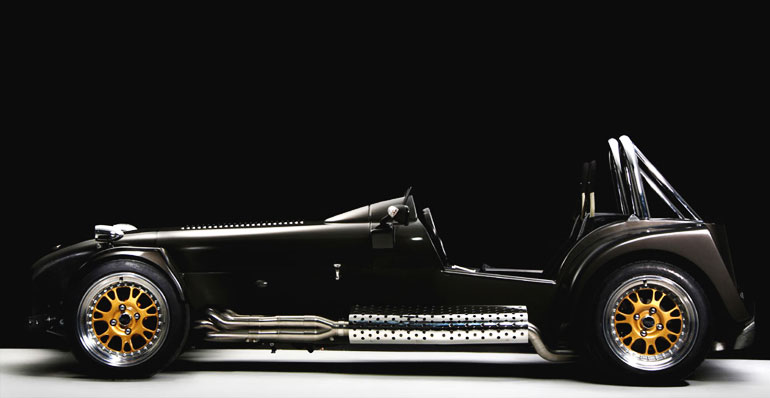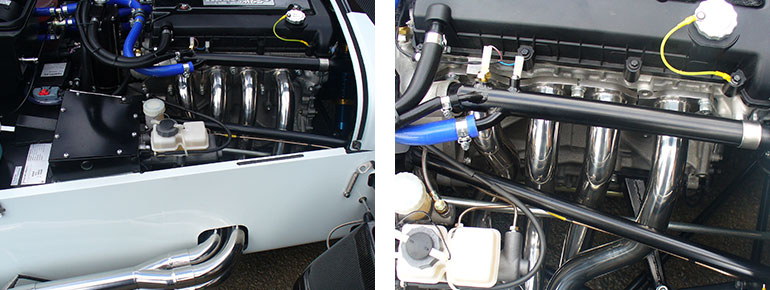-
Caterham specialist product page and Case Studies

In the course of BTB’s work over the years, many current projects have had to be shrouded in secrecy. This can be because of the nature of the project, where an exhaust has been developed in collaboration with a manufacturer or engineering partner. It can also be for other reasons, such as to prevent technical details entering the public domain which could be of benefit to competitors, be they either commercial or sporting. However the knowledge gained from the successful, and even the unsuccessful projects, cannot be unlearned. These pages are intended to give a flavour of the depth and breadth of BTB’s exhaust development and manufacturing expertise.
Aside from the occasional Caterham that had been wildly modified for competition use, such as QED’s twin cam engine example from the 1980s. BTB hadn’t had much to do with Caterhams in general, as they were always well resolved for their primary role as sporting road cars. That was until the emerging popularity of trackdays, and particulary the launch of the original track focused R500. Caterhams had always performed well on the track with the Chapman inspired ethos of added lightness, matched by increasingly high power levels. The R500 with it’s race tuned K-series engine, was mainly sold with track use in mind. It was about this time though, that noise limits started to be more strictly enforced and the R500 failed to comply with the majority of circuits weekday limits.
With the number of enquiries that were being received for repackable silencers specifically for R500s, it was clear to BTB that a robust solution was required. It was also clear that customers did not want to compromise the power output from their engines, or risk damaging their fragile (and expensive) engines by increasing back pressure in the exhaust. After testing a number of possible internal baffle designs within a repackable silencer a tapered megaphone design was chosen that gave the best attenuation with a negligible power deficit. BTB even supplied one of their R500 silencers to the factory demonstrator that allowed it to be used on circuits with the most demanding noise restrictions at the time.

In the year 2000 the Caterham Blackbird became the first officially recognised motorcycle engine Caterham model. Matching Honda’s top of the range CBR1100 superbike engine to Caterham’s lightweight chassis made a very exciting combination. The prototype and first production cars had exhaust manifolds and repackable silencers made by BTB. These were, perhaps surprisingly, mechanically robust cars, a point which was proven by then Honda F1 driver Ricardo Zonda when he gave some memorable passenger rides to Honda guests around the Grand prix circuit in Estoril.
2008 saw the release of the Caterham Levante. The ultimate incarnation of the motorcycle derived engine package. Twin Yamaha 20 valve cylinder heads on a common crankcase and fed by a Rotrex supercharger and breathing through a bespoke BTB exhaust. Producing 500bhp at over 1000rpm, this car was all about extreme performance. BTB also fabricated the unique twin rollhoops and sculpted exhaust heatshields that helped give the car a suitably distinctive style.
2010 saw BTB collaborating with the factory in the development of the SP300R, the first Caterham to deviate from the longstanding 7 formula.
Follow BTB Exhausts on @BTBExhausts and LinkedIn or Subscribe to our newsletter.
Read more about our Motorsport Exhaust Systems or Download our Brochure.
- T +44 (0) 1327 261797
- E sales@btbexhausts.co.uk

